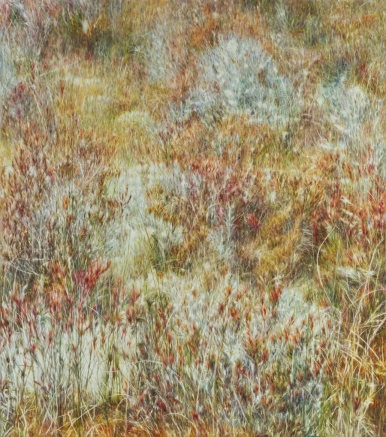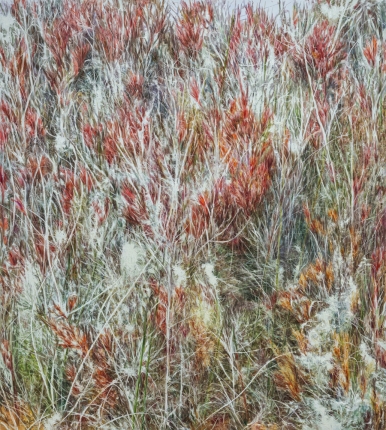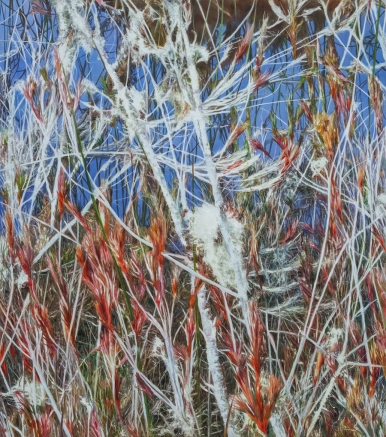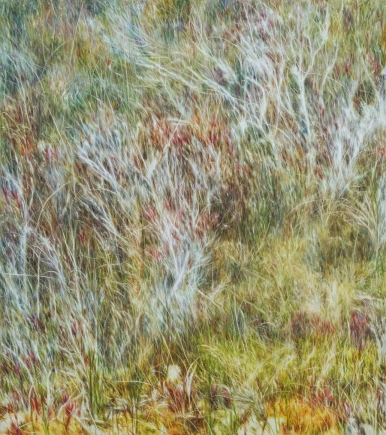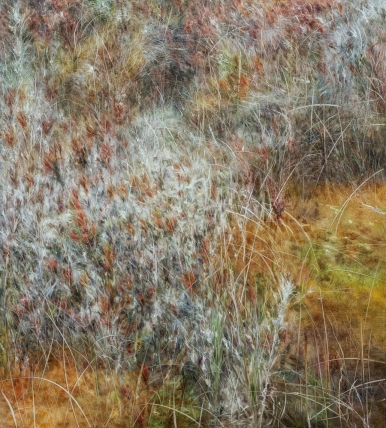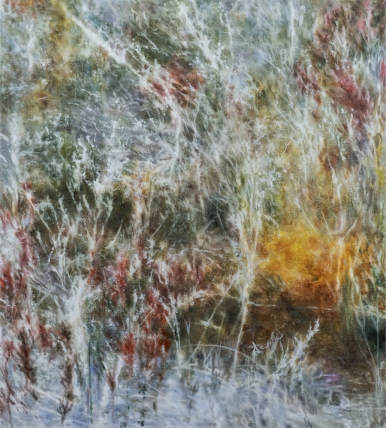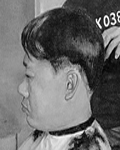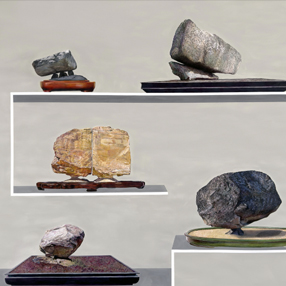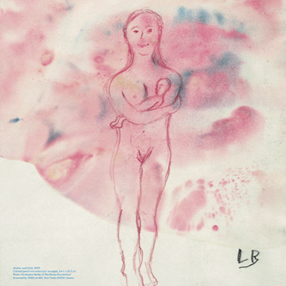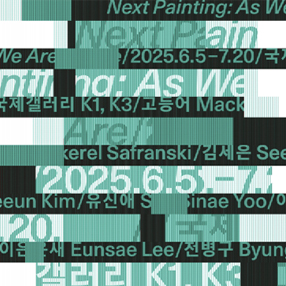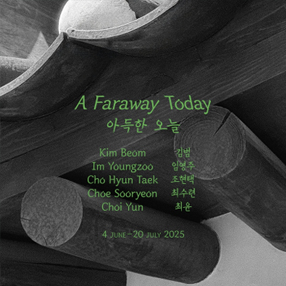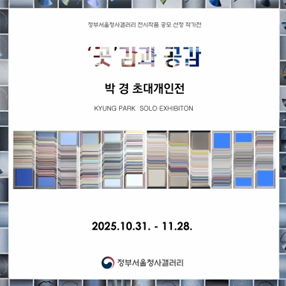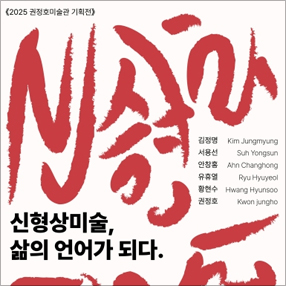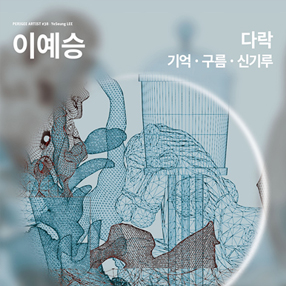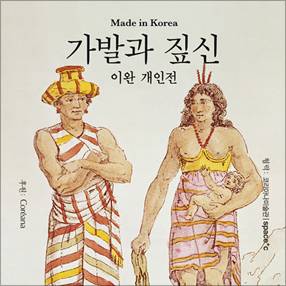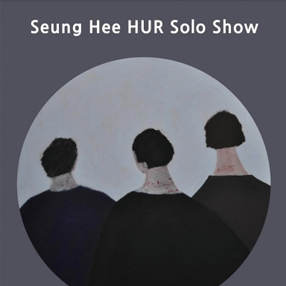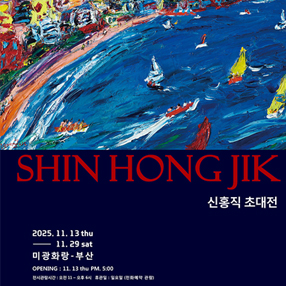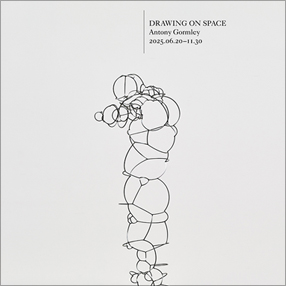본문
-
이광호
Untitled 4819-61, 2023 Oil on canvas 225 x 198 cm Courtesy of the artist and Kukje Gallery 사진: 전병철 이미지 제공: 국제갤러리
-
이광호
Untitled 4819-67, 2023 Oil on canvas 116 x 104 cm Courtesy of the artist and Kukje Gallery 사진: 전병철 이미지 제공: 국제갤러리
-
이광호
Untitled 4819-62, 2023 Oil on canvas 170 x 150 cm Courtesy of the artist and Kukje Gallery 사진: 전병철 이미지 제공: 국제갤러리
-
이광호
Untitled 4819-63, 2023 Oil on canvas 170 x 150 cm Courtesy of the artist and Kukje Gallery 사진: 전병철 이미지 제공: 국제갤러리
-
이광호
Untitled 4819-13, 2023 Oil on canvas 90 x 81 cm Courtesy of the artist and Kukje Gallery 사진: 전병철 이미지 제공: 국제갤러리
-
이광호
Untitled 4819-24, 2023 Oil on canvas 90 x 81 cm Courtesy of the artist and Kukje Gallery 사진: 전병철 이미지 제공: 국제갤러리
-
이광호
Untitled 4819-6, 2023 Encaustic on canvas 90 x 81 cm Courtesy of the artist and Kukje Gallery 사진: 전병철 이미지 제공: 국제갤러리
-
Press Release
Kukje Gallery is pleased to present BLOW-UP, a solo exhibition of new works by Lee Kwang-Ho, on view from December 14, 2023 to January 28, 2024. Nine years since the artist’s last exhibition at Kukje Gallery, the upcoming presentation at both spaces in the gallery’s K1 building will be devoted to showcasing 65 works by Korea’s most widely celebrated realist painter.
Mastering a range of painterly techniques and styles that include both traditional realism and contemporary abstraction, Lee’s diverse practice captures an array of subjects including portraiture, still life, and landscape. One of the central concerns of the artist is the role of “perspective” and the relationship between what the artist sees and how the painted subject is captured on canvas. BLOW-UP focuses exclusively on Lee’s recent series exploring the wetlands of New Zealand’s South Island near the Kepler Track. By framing this wild, diverse landscape, and applying his prodigious eye for detail, Lee invites the viewer to enter the picture, contemplating the natural world as framed by his unique painterly perspective and his inimitable manner[1] in terms of his use of techniques.
At the rear gallery in K1, there is a large-scale landscape painting that covers the entire wall. Being the first work of this scale completed by the artist, the landscape is composed of 59 individual canvases organized by the titles from Untitled 4819-1 to Untitled 4819-60 (excluding Untitled 4819-12). To capture this extraordinary landscape, the artist started by taking countless photographs from different angles in order to capture all the tremendous detail in the complex ecology. Scaled to fit the gallery space, the installation creates a kind of backdrop; to construct this scene, Lee enlarged one of his photographs to cover the wall and divided it into 60 equally sized frames, allowing the individual canvases to create a grid where each painting is both autonomous and part of a larger whole. In this way, Lee Kwang-Ho prompts the viewer to constantly shift their focus while becoming aware of their own point of view. At this scale and detail, the scarlet and ivory moss and clumps of grass are magnified to become actors on an enormous stage, where the human figure no longer dominates. Standing in front of this scene, the audience cannot grasp the entirety of the subject, and for Lee, the particular elements, the varied terrain and individual fauna are not his primary concerns. Instead, the artist is focused on the shift of perspective the viewer experiences in front of the deliberately blown-up and abstracted scene.
“Blow-Up,” the title of the exhibition, is taken from a 1966 film of the same name by Michelangelo Antonioni and conveys a technical term meaning to enlarge a photograph or film still. As a source of inspiration for the artist, the film explores themes of optical desire and how visual truth is manipulated by the camera. Acknowledging this critical disconnect between what we see and how an image is constructed, Lee uses scale to a similar effect. The individual frames in the Untitled 4819 series demonstrate how material and technical variations highlight one’s subjectivity and desire. As each work is framed mechanically, rather than being devoted to a unified composition, the artist directs his focus and ours to each unique brushstroke. As a result, the framing device of the picture disrupts the viewer’s attempt to comprehensively “read” the entire landscape. In a further critical strategy, Lee has removed a single canvas from the image, exposing the wall, while simultaneously showing a blown-up version of the missing work on an adjacent wall in the gallery. This kind of subtle manipulation of perspective and formal sleight of hand is continued in the front gallery. In these single works on canvas, the artist further explores how paintings relate to and communicate with one another through scale and subject matter. By conceptually joining the two spaces, Lee transforms the entire exhibition into a total artwork, illustrating how a familiar subject such as a landscape can—like a concerto—be interpreted endlessly.
Lee’s canvas teems with tremendous biodiversity including plants and grasses of myriad descriptions, flowers, mosses, and puddled water. Intertwined in an all-over style, these elements remind us not only of nature but also of the complex abstraction inherent to the unrestrained brushstrokes that constitute painting. Lee makes his own canvas and tests various grounds to control the absorption of the paint. Combined with this formal rigor, the artist also measures his own breath and its impact on the length of his brushstroke, thereby instilling harmony and an overall gestural effect. In addition, he also has developed a rich vocabulary of brushstrokes that stimulate the viewer’s tactile and somatic experience. For example, Lee utilizes a glazing technique to express the transparency of water and employs impasto with rubber brushes to suggest the surfaces of mottled plant life; furthermore, his repertoire includes using the Egyptian encaustic technique where colored pigments are mixed with heated beeswax to create yet another embodied form that is applied directly to the surface of the canvas. In the case of encaustic, particularly, the pigments mix in compelling and unexpected ways as the wax medium melts into the canvas, resulting in a naturalistic blurring of forms. Describing these many micro abstractions and poetic contingencies, Lee has compared them to the natural changes that arise from his own aging and diminishing eyesight.
The first exhibition of Lee Kwang-Ho at Kukje Gallery was a group exhibition of three painters in 2007, where he presented the Inter-View series. While, at first sight, these paintings assume the form of a conventional portrait, they were based on extensive interviews with one hundred models and explored the nuanced character of each interviewee by engaging such diverse mediums as paintings, films, and representative objects. Based on the individual relationships developed through the interviews, Lee captured the models’ complex inner lives onto the canvases. This approach was continued in his Cactus series, shown in his first solo exhibition at Kukje Gallery in 2010, where the artist attempted to go beyond mere visual depiction to reveal how the complex forms of the succulents are reconfigured when the artist’s gaze meets and interrelates with the painted object. In this way, Lee was more concerned with the inner image formed when encountering the object, where the image deepens his “desire for tactile expression,” than just visual verisimilitude. To achieve this, Lee carefully balanced masterful, hyper-realistic depictions of the plants while simultaneously suggesting an abstracted body that evoked a color-field suffused with his will and desire. In these powerful works, the painter felt there is a greater openness to an abstracted subject, where the forms and medium itself induce the viewers to stay and appreciate the image as if they are appreciating an actual moment of focused consciousness in nature.
In each of these series, Lee has created a very precise and considered pictorial framework that both showcases his prodigious skill while prompting a deeper experience of the optical. This practice is explored to even greater effect in the recent landscape series. Unlike a person or a cactus, which are both single subjects with clear outlines and boundaries, the wetland is a “place,” an assembly of relationships and individual beings, and it necessitates a much more intimate process of discerning each element to be represented. The area framed in the landscape can be narrow or wide, and the depicted object can be at any scale, from macro to micro. In other words, the artist becomes yet another subject within the landscape, the eye that frames the pictorial object, and the depicted landscape in turn becomes the scene captured in his sight. When Lee crops the sectioned image once again into sixty modular frames, all evenly spaced in a grid, the portrayed scene suggests an infinite logic, where the landscape can be expanded forever as captured by the roving gaze. In this way, the viewer standing face to face with the work can produce one, two, four, eight, or other infinite combinations of images and, by framing the pictorial scene for oneself, is encouraged to participate in what has been previously regarded as the closed perspective of the artist.
국제갤러리는 오는 12월 14일부터 2024년 1월 28일까지 이광호의 개인전 《BLOW-UP》을 개최한다. 지난 2014년 이후 9년 만에 열리는 이번 전시에서는 서울 K1 두 개의 공간에서 한국의 대표적 사실주의 화가로 불리는 작가의 신작 65점을 선보인다.
전통적인 회화적 재현기법으로부터 현대적 기법까지 광범위하게 섭렵한 이광호는 인물화, 정물화, 풍경화의 장르적 경계를 넘나들며, 대상이 무엇이든 간에 ‘어떤 시선으로’ 그 대상을 표현할 것인가에 대해 줄기차게 탐구해 왔다. 본 전시는 그 가운데 그가 뉴질랜드 여행 중 케플러 트랙(Kepler Track) 인근에 위치한 습지를 우연히 방문한 것을 계기로 작업한 근작들에 집중한다. 작가는 대상과의 밀접한 상호작용을 캔버스 위에 표현해내기 위해 회화의 근간에부터 새로이 접근했고, 본 전시는 그 면면을 살펴봄으로써 그의 고유한 회화적 시선을 드러내는 기술 혹은 매너(manner)[1]를 사유하는 기회를 갖고자 한다.
K1의 안쪽 전시 공간에는 지금껏 보지 못한 이광호의 대규모 풍경 회화가 자리한다. 〈 Untitled 4819-1 〉부터 〈 Untitled 4819-60 〉까지, (〈 Untitled 4819-12 〉를 제외한) 59점의 캔버스로 구성된 이 연작은 작가가 습지를 방문하여 찍은 수많은 사진들 중 하나에서 출발했다. 그는 이번 전시를 위해 하나의 이미지를 전시장 벽면을 가득 채울 만큼 큰 이미지로 확대한 후 60개의 화폭으로 구획하였고, 각각의 캔버스가 전체 풍경 이미지의 일부이자 또 그 자체로 하나의 완결된 작품이 되는 상황을 연출한다. 그 결과 습지에서 자라는 붉고 흰 이끼들이 확대되어 마치 커다란 식물처럼 보이기도 할 만큼, 작품 앞에 선 관람객이 대상물의 실제 크기를 가늠하기는 어렵다. 하지만 이것을 이끼로 인식하든, 타지의 풀 나무로 인식하든 그것은 작가에게 그리 중요하지 않다. 다만 작가 자신이 의도적으로 확대(blow-up)하여 추상성을 부여한 작품 앞에서 개개인이 느끼거나 상호교류하는 그 무언가에 진정한 의미와 가치가 있다고 여긴다.
본 전시의 제목 ‘BLOW-UP’은 이광호가 영감 받은 미켈란젤로 안토니오니(Michelangelo Antonioni)의 영화 〈 Blow-Up 〉(1966)에서 인용한 것으로, 사진이나 영화를 확대한다는 용어상의 의미를 지닌다. 한편 영화 〈 Blow-Up 〉은 시선의 욕망과 시각적 진실에 의문을 던지는 메시지를 담고 있다. 〈 Untitled 4819 〉 연작에서도 이와 흡사한 작가의 의도를 엿볼 수가 있는데, 각각의 캔버스가 저마다의 독자성을 이끌어내려는 듯 재료와 테크닉의 측면에서 다양한 변주를 보여준다는 점에서 그러하다. 구획의 과정이 보다 기계적이 된 만큼, 작가는 화면 구성에 심혈을 기울이는 대신 즉흥에 가까운 붓질 하나하나에 더욱 집중하였다. 그로 인해 관람객의 전체 풍경을 총체적으로 ‘읽어내려는’ 시도는 훼방을 받게 된다. 더 나아가, 60개의 캔버스 중 하나를 선택해 떼어내고 벽면이 그대로 노출되게끔 하는 동시에 떼어낸 작품의 확대된 버전을 마치 새로운 풍경화인양 맞은편의 벽면에 걸어 선보인다. 동일한 방식의 변주는 K1의 창이 있는 앞쪽 전시공간에서도 이어진다. 〈 Untitled 4819 〉 이미지의 일부이자 각자 독립된 작품들은 두 공간에서 서로 관계 맺으며, 전시 전체를 하나의 악보에 기반한 협주곡으로 변모시킨다.
이광호의 화면을 가득 채운 얽히고설킨 물풀과 꽃, 이끼, 물웅덩이 등의 요소들은 올오버(all-over) 형식으로 추상회화의 화면을 일깨우는 자유분방한 붓터치를 연상시킨다. 그는 캔버스 천을 직접 제작하고 다양한 바탕칠을 실험하면서 물감의 흡수력을 조절하는 동시에 각 작품마다 호흡을 달리 드러냈다. 또한 촉각적 감각을 가시화하기 위해 다양한 붓질의 연구를 병행하였다. 투명한 깊이감과 색채 표현을 위한 글레이징이나 고무붓을 활용한 임파스토, 밀랍에 안료를 섞은 후 불에 달구어 화면에 고착시키는 고대 이집트의 엔코스틱(encaustic) 기법이 그 예이다. 특히 엔코스틱의 경우, 화면 위에서 밀랍이 녹으면서 물감이 서로 섞여 윤곽을 흐리게 만드는 우연적 효과를 낳는다. 이처럼 화면 안으로 들어온 추상성이나 우연성을 두고, 이광호는 스스로가 나이 들어 시력이 저하됨에 따라 나타나는 자연스러운 변화와 연관 지어 설명하기도 한다.
국제갤러리에서 열린 이광호의 첫 전시는 2007년 3인 회화 그룹전이었으며, 그는 〈인터뷰(Inter-View)〉 연작을 선보였다. 이는 흔한 초상화의 형식을 갖춘 작품들로 보이나, 실제 그는 100명의 모델을 인터뷰하고 회화, 영상, 오브제 등으로 각 인물에 대해 입체적으로 탐구함으로써 작가와의 관계 맺기를 토대로 인물의 내면까지 작품에 담아냈다. 단순한 대상의 묘사를 넘어서서 작가의 시선과 대상 간의 상호작용에 의해 재구성되는 모습을 드러내려는 시도는 이후 2010년 국제갤러리에서 열린 첫 개인전에서 선보인 〈선인장〉 연작에서도 계속되었다. 그는 대상이 실제 어떻게 보이는지에 관심 갖기보다는 대상을 대하는 작가의 내면 심상, 즉 그의 ‘촉각적 표현 욕구’를 극대화하고자 했다. 그 결과, 작품은 그가 실험하고 단련해온 온갖 테크닉을 자랑하는 극도의 사실성에 기반한 듯해 보이나, 다른 한편으로 그의 의지가 담긴 색면 덩어리를 통한 추상성을 제시해오곤 했다. 일련의 추상성은 이를 마주하는 관람객의 시선이 스쳐 지나가는 대신 하나의 개별적 자연을 대하듯 머물러 감상하도록 유도한다.
이광호가 초상화와 선인장을 그리며 각각의 맥락에서 생성해온 회화적 구조 혹은 생산적 구조의 틀은 최근 습지 연작에서 극대화된다. 윤곽이나 경계가 분명한 인물이나 선인장과 같이 하나의 대상이기 보다 대상이 군집해 있는 ‘장소’의 성격을 띠는 습지의 경우, 작가는 이를 재현하기 위해 먼저 대상을 구획한다. 그 면적을 좁게 또는 넓게 구획할 수도 있고, 대상을 확대(줌인) 또는 축소(줌아웃)하는 구획도 가능하다. 즉 이광호는 대상을 재단하는 주체가 되며, 그가 그리는 풍경은 곧 그의 시선에 담긴 풍경이 된다. 본 전시에서 작가는 한번 구획한 이미지를 다시 일정 간격을 지닌 60개의 프레임으로 나누어 모듈화 하는 시도를 감행함으로써 작품 속 풍경이 무한하게 확장 가능한 상상의 풍경임을 시사한다. 이로써 작품 앞에 선 관람객은 그 안에서 1개, 2개, 4개, 8개, 혹은 그 이상으로 무한한 조합의 이미지들을 생성할 수 있게 되고, 기존에 작가의 고유 권한이라 여겨진 풍경 화면을 구획하는 작업에 직접 참여하도록 권유 받는다.전시제목이광호: BLOW-UP
전시기간2023.12.14(목) - 2024.01.28(일)
참여작가 이광호
관람시간10:00am - 06:00pm / 일, 휴일 10:00am - 05:00pm
휴관일매주 월요일
장르회화
관람료무료
장소국제갤러리 Kukje Gallery (서울 종로구 소격동 58-1 국제갤러리 K1)
연락처02-733-8449
-
Artists in This Show
-
1967년 출생
-
국제갤러리(Kukje Gallery) Shows on Mu:umView All
Current Shows
-
박경: '곳'감과 공감
정부서울청사 갤러리
2025.10.31 ~ 2025.11.28
-
신형상미술, 삶의 언어가되다
권정호미술관
2025.09.02 ~ 2025.11.29
-
PERIGEE ARTIST #38 이예승_다락: 기억·구름·신기루
페리지갤러리
2025.10.13 ~ 2025.11.29
-
이완: Made in Korea 가발과 짚신
코리아나미술관 스페이스 C
2025.10.23 ~ 2025.11.29
-
허승희: 마음이 머물다
청화랑
2025.11.06 ~ 2025.11.29
-
신홍직 초대전
미광화랑
2025.11.13 ~ 2025.11.29
-
이탈리아 국립 카포디몬테 미술관 19세기 컬렉션 : 나폴리를 거닐다
마이아트뮤지엄
2025.08.01 ~ 2025.11.30
-
안토니 곰리: DRAWING ON SPACE
뮤지엄 산
2025.06.20 ~ 2025.11.30




